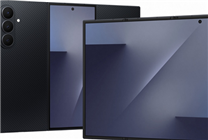Breakthrough in Holographic Technology: Merging OLEDs with Holographic Metasurfaces
Recent research from the University of St. Andrews has unveiled a significant advancement in holographic technology that could revolutionize smart devices, communication, gaming, and entertainment sectors. This pioneering study, published in the journal Light: Science & Applications, introduces an innovative combination of holographic metasurfaces (HMs) and organic light-emitting diodes (OLEDs), marking a substantial leap forward in optoelectronic devices.
The Evolution of Holographic Displays
Traditionally, hologram production has depended heavily on laser technology. However, this new study demonstrates that integrating OLEDs with holographic metasurfaces offers a simplified production process, reducing equipment size and costs significantly. This groundbreaking development addresses the challenges that have long hindered the widespread adoption of holographic technology.
What Are OLEDs and Holographic Metasurfaces?
OLEDs are thin-film devices prominently used in manufacturing color pixels for mobile phone screens and televisions. As an effective plane light source, OLEDs enable advancements in diverse fields such as optical wireless communications, biophotonics, and sensing technologies. Their compatibility with other technological platforms positions OLEDs as ideal candidates for crafting miniaturized optical systems.
On the other hand, holographic metasurfaces consist of an intricate array of "superatoms," each measuring approximately one-thousandth the diameter of a human hair. This specialized structure modulates light properties, enabling various applications, from data storage to anti-counterfeiting measures and optical displays.
Merging Technologies: A New Paradigm
This groundbreaking research marks the first instance of combining OLEDs with holographic metasurfaces to create the foundational components of holographic displays. By meticulously designing the shape of each "superatom," researchers can control light characteristics at a granular level. This precision transforms each "superatom" into a functional pixel within the holographic metasurface, manipulating light properties at specific positions.
As light passes through the holographic metasurface, changes in its properties—combined with light interference principles—allow for the projection of pre-designed images on the opposing side of the metasurface. This innovative approach provides a pathway for creating complex holograms with unprecedented efficiency.
Insights from Experts
Professor Iver Samuel from the School of Physics and Astronomy expressed excitement about the potential of this new direction for OLED technology. The developers believe that this collaboration not only heralds fresh possibilities for hologram generation but also offers innovative methods for light regulation.
Andrea Difalco, a nanophotonics specialist, emphasized that hologram metasurfaces serve as a versatile platform for controlling light characteristics. The research effectively dismantles key technological barriers that have previously restricted the application of metamaterials, paving the way for enhanced holographic display frameworks and significant advancements in emerging technologies like virtual reality (VR) and augmented reality (AR).
Additionally, Professor Graham Turnbull highlighted a notable advantage of this new methodology. Unlike conventional OLED displays, which typically require thousands of pixels to depict a simple image, this new technique enables the projection of a complete image using just a single OLED pixel. This streamlined approach holds potential for reducing costs and resource requirements in future applications.
Implications for Future Technologies
Before this breakthrough, the use of OLEDs in holographic displays was largely limited to creating simple graphics, curtailing their application in multiple scenarios. The integration of OLEDs with holographic metasurfaces now opens up exciting pathways for the development of compact, highly integrated display technologies.
As we look to the future, this fusion of technologies heralds a new era in holographic displays, with the potential to enhance user experiences across a diverse range of applications. From immersive gaming and interactive entertainment to transformative communication tools, the implications are vast.
In conclusion, the integration of OLEDs and holographic metasurfaces could revolutionize the way we perceive and interact with technology. As researchers continue to refine this groundbreaking approach, we stand on the brink of a new frontier in holographic technology that promises to enrich our daily lives in unprecedented ways.








